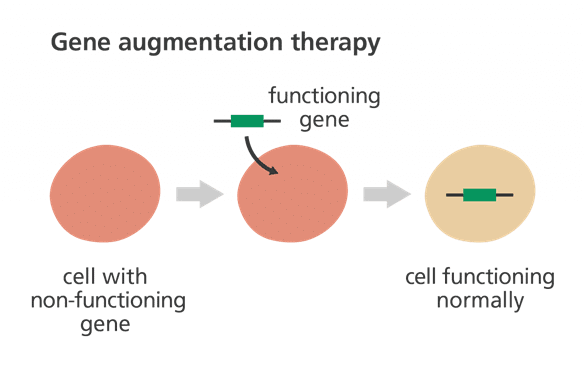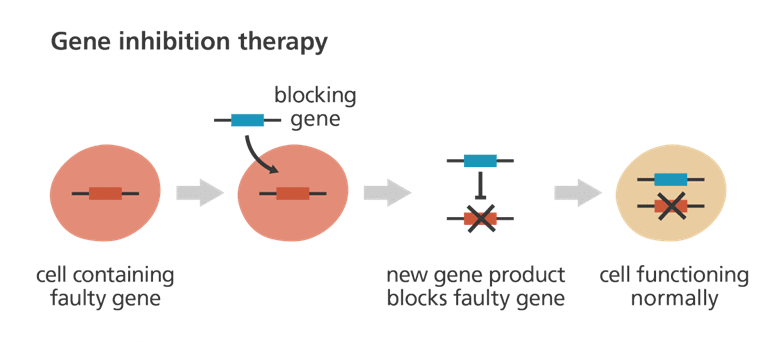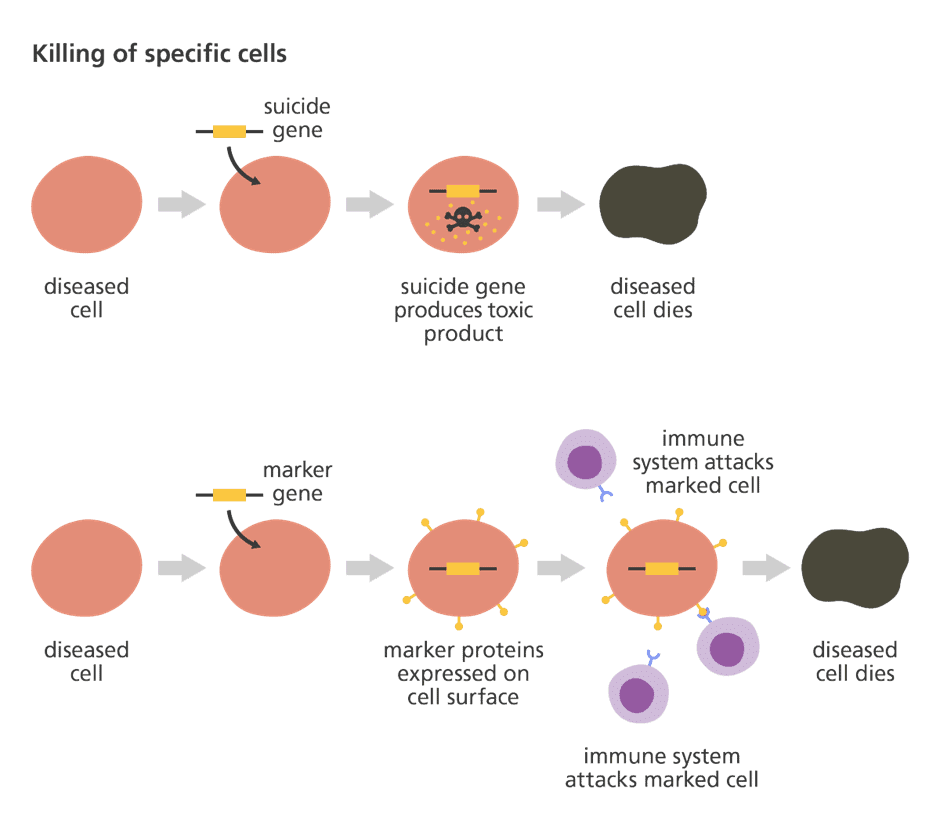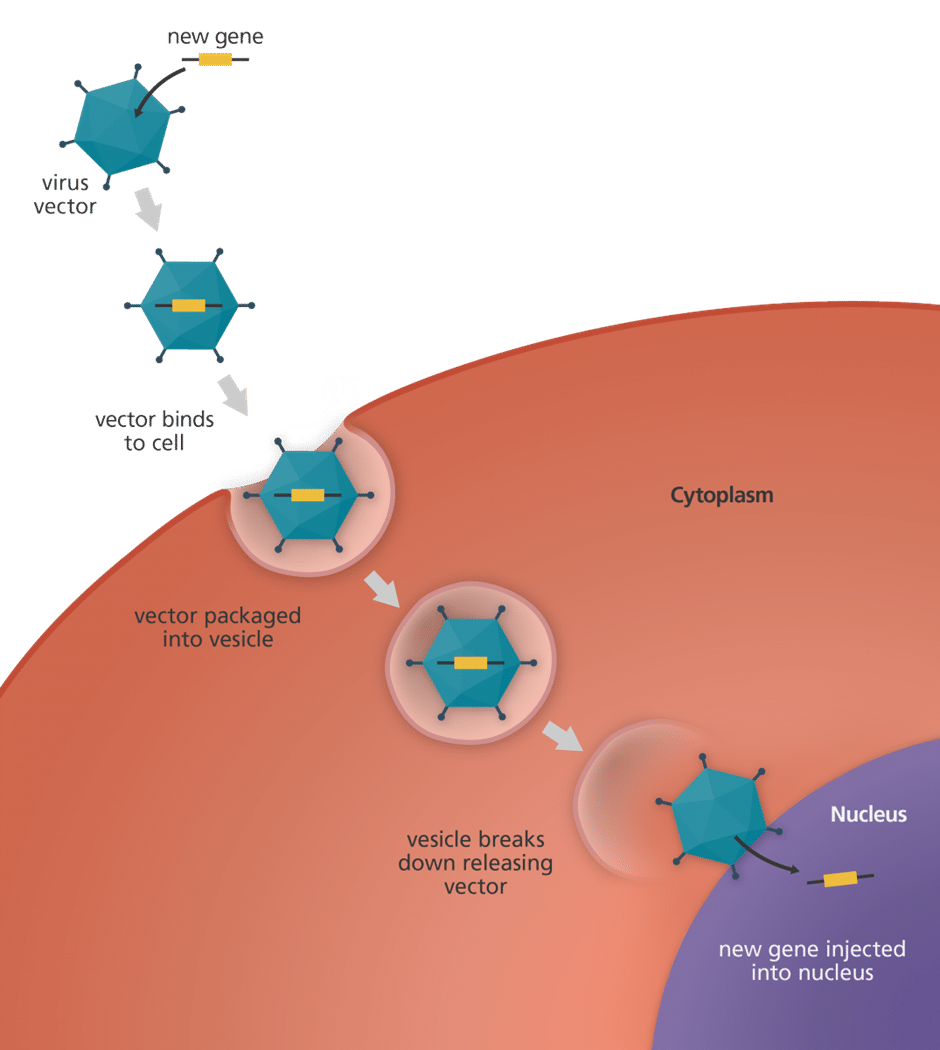UPSC Exam > UPSC Notes > Science & Technology for UPSC CSE > Gene Therapy
Gene Therapy | Science & Technology for UPSC CSE PDF Download
Gene therapy is when DNA is introduced into a patient to treat a genetic disease. The new DNA usually contains a functioning gene to correct the effects of a disease-causing mutation.
- Gene therapy uses sections of DNA? (usually genes?) to treat or prevent disease.
- The DNA is carefully selected to correct the effect of a mutated gene that is causing disease.
- The technique was first developed in 1972 but has, so far, had limited success in treating human diseases.
- Gene therapy may be a promising treatment option for some genetic diseases?, including muscular dystrophy? and cystic fibrosis?.
- There are two different types of gene therapy depending on which types of cells are treated:
- Somatic gene therapy: transfer of a section of DNA to any cell of the body that doesn’t produce sperm or eggs. Effects of gene therapy will not be passed onto the patient’s children.
- Germline gene therapy: transfer of a section of DNA to cells that produce eggs or sperm. Effects of gene therapy will be passed onto the patient’s children and subsequent generations.
Gene Therapy Techniques
There are several techniques for carrying out gene therapy. These include:
Gene Augmentation Therapy
- This is used to treat diseases caused by a mutation that stops a gene from producing a functioning product, such as a protein?.
- This therapy adds DNA containing a functional version of the lost gene back into the cell.
- The new gene produces a functioning product at sufficient levels to replace the protein that was originally missing.
- This is only successful if the effects of the disease are reversible or have not resulted in lasting damage to the body.
- For example, this can be used to treat loss of function disorders such as cystic fibrosis by introducing a functional copy of the gene to correct the disease (see illustration below).

Gene Inhibition Therapy
- Suitable for the treatment of infectious diseases, cancer and inherited disease caused by inappropriate gene activity.
- The aim is to introduce a gene whose product either:
- Inhibits the expression of another gene.
- Interferes with the activity of the product of another gene.
- The basis of this therapy is to eliminate the activity of a gene that encourages the growth of disease-related cells.
- For example, cancer is sometimes the result of the over-activation of an oncogene? (gene which stimulates cell growth). So, by eliminating the activity of that oncogene through gene inhibition therapy, it is possible to prevent further cell growth and stop the cancer in its tracks.

Killing of Specific Cells
- Suitable for diseases such as cancer that can be treated by destroying certain groups of cells.
- The aim is to insert DNA into a diseased cell that causes that cell to die.
- This can be achieved in one of two ways:
- The inserted DNA contains a “suicide” gene that produces a highly toxic product which kills the diseased cell
- The inserted DNA causes expression of a protein that marks the cells so that the diseased cells are attacked by the body’s natural immune system.
- It is essential with this method that the inserted DNA is targeted appropriately to avoid the death of cells that are functioning normally.

How is DNA Transfer Done?
- A section of DNA/gene containing instructions for making a useful protein is packaged within a vector, usually a virus?, bacterium? or plasmid?.
- The vector acts as a vehicle to carry the new DNA into the cells of a patient with a genetic disease.
- Once inside the cells of the patient, the DNA/gene is expressed by the cell’s normal machinery leading to production of the therapeutic protein and treatment of the patient’s disease.
 An illustration to show the transfer of a new gene into the nucleus of a cell via a viral vector.
An illustration to show the transfer of a new gene into the nucleus of a cell via a viral vector.
Challenges of Gene Therapy
1. Delivering the gene to the right place and switching it on:
- It is crucial that the new gene reaches the right cell
- Delivering a gene into the wrong cell would be inefficient and could also cause health problems for the patient
- Even once the right cell has been targeted the gene has to be turned on
- Cells sometimes obstruct this process by shutting down genes that are showing unusual activity.
2. Avoiding the immune response:
- The role of the immune system is to fight off intruders.
- Sometimes new genes introduced by gene therapy are considered potentially-harmful intruders.
- This can spark an immune response in the patient, that could be harmful to them.
- Scientists therefore have the challenge of finding a way to deliver genes without the immune system ‘noticing’.
- This is usually by using vectors that are less likely to trigger an immune response.
3. Making sure the new gene doesn’t disrupt the function of other genes:
- Ideally, a new gene introduced by gene therapy will integrate itself into the genome of the patient and continue working for the rest of their lives.
- There is a risk that the new gene will insert itself into the path of another gene, disrupting its activity.
- This could have damaging effects, for example, if it interferes with an important gene involved in regulating cell division, it could result in cancer.
4. The Cost of Gene Therapy:
- Many genetic disorders that can be targeted with gene therapy are extremely rare.
- Gene therapy therefore often requires an individual, case-by-case approach. This may be effective, but may also be very expensive.
The document Gene Therapy | Science & Technology for UPSC CSE is a part of the UPSC Course Science & Technology for UPSC CSE.
All you need of UPSC at this link: UPSC
|
90 videos|491 docs|209 tests
|
FAQs on Gene Therapy - Science & Technology for UPSC CSE
| 1. What is gene therapy? |  |
Gene therapy is a medical technique that involves introducing genetic material into a person's cells to treat or prevent a disease. This genetic material can either replace a faulty or missing gene, or it can introduce a new gene that will help the body fight against a specific condition.
| 2. How does gene therapy work? |  |
Gene therapy typically involves the use of a vector, which is a vehicle that carries the therapeutic genetic material into the target cells. The most commonly used vectors are viruses that have been modified to be harmless. Once inside the cells, the therapeutic genes are integrated into the DNA and start producing the desired protein or modifying the functioning of existing genes.
| 3. What are the potential benefits of gene therapy? |  |
Gene therapy has the potential to provide long-lasting or even permanent treatment for genetic disorders and diseases that have a genetic component. It can also potentially be used to enhance the body's ability to fight against cancer or other diseases. Additionally, gene therapy can offer personalized medicine by tailoring treatments to an individual's genetic makeup.
| 4. Are there any risks or side effects associated with gene therapy? |  |
Gene therapy is a relatively new field, and although it holds great promise, there are still potential risks and side effects. These can include an immune response to the viral vector, an unintended immune response to the therapeutic protein, or even the activation of oncogenes, which could lead to the development of cancer. However, extensive research and clinical trials are conducted to minimize these risks and ensure the safety of gene therapy treatments.
| 5. What are the current challenges in gene therapy research and implementation? |  |
There are several challenges in gene therapy research and implementation. One major challenge is the delivery of the therapeutic genes to the target cells in a safe and efficient manner. Another challenge is ensuring long-term stability and effectiveness of the introduced genes. Additionally, the high cost of gene therapy treatments and the need for specialized infrastructure and expertise pose challenges for widespread implementation. However, ongoing research and advancements in the field are addressing these challenges to make gene therapy more accessible and effective.
Related Searches





















